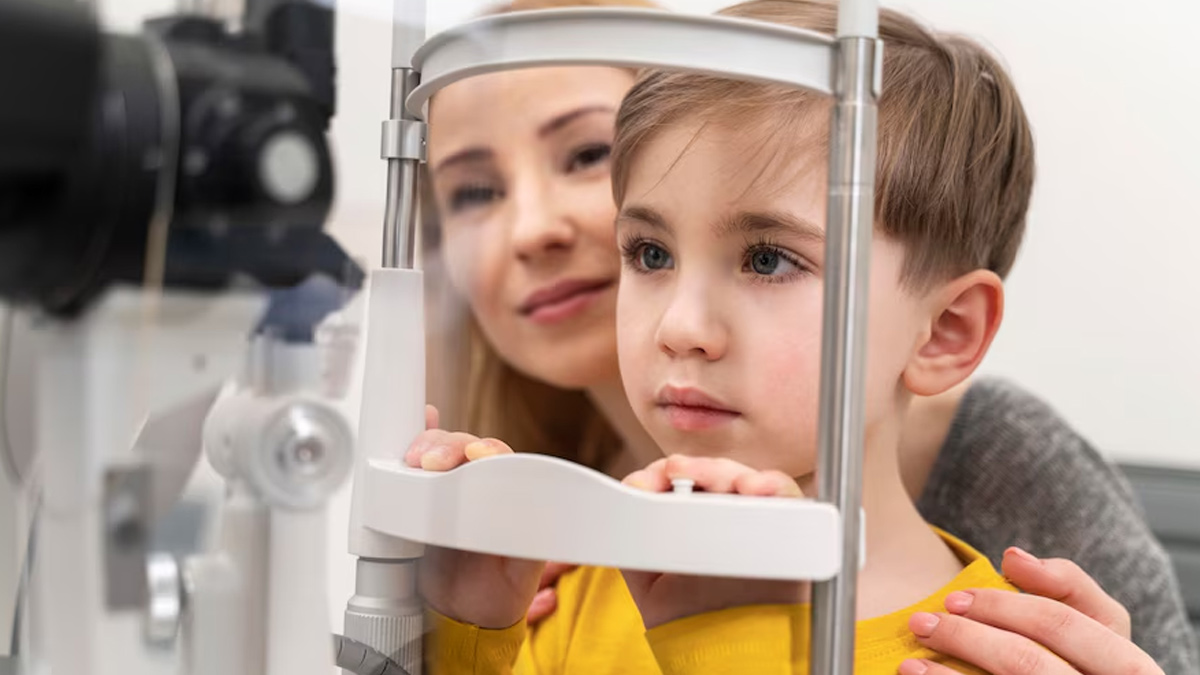
Technological advancements are a blessing in many ways. However, it has its downsides. For instance, digital devices like phones, laptops, and tablets have immense use in today's world, but they are also one of the biggest contributors to eye problems, including in children.
Table of Content:-
Most doctors advise limiting screen time to two hours a day for children aged two and above. However, in today's fast-paced world, kids sit in front of screens for prolonged hours, leaving their eyes strained and their vision blurred. In fact, a 2023 study published in the JAMA Network Open found that after COVID lockdowns, more children developed myopia (nearsightedness) compared to before. We asked experts what this condition is and how parents can work towards preventing it in children.
Also Read: How To Keep Your Child’s Eyesight In Check? Here Are Expert-approved Tips
Understanding Nearsightedness

Speaking with the OnlyMyHealth team, Dr Aditi Sapovadia, Paediatric Ophthalmologist, Squint and Cataract Consultant at Netradeep Maxivision Eye Hospital, Rajkot, explains, "A nearsighted person, or someone with myopia, has difficulty seeing distant objects. This condition occurs when the eye's shape causes light rays to focus in front of the retina instead of directly on it, resulting in blurry distance vision while close-up objects remain clear."
In children, some of the most common causes of nearsightedness include:
- Genetic factors, with a family history of myopia
- Environmental factors, such as prolonged close-up activities like reading or using digital devices
- Insufficient outdoor time and inadequate light exposure
Dr Sapovadia adds that poor lighting during visual tasks and a lack of regular eye check-ups can also contribute to worsening myopia.
The previously mentioned 2023 study suggests that even after COVID restrictions were lifted, children did not spend as much time outdoors as they did before the pandemic. Simultaneously, screen time increased, hence increasing the number of cases of childhood myopia.
Signs Your Child Is Nearsighted

Here are some of the common symptoms of nearsightedness in children:
- Frequent headaches
- Complaints of blurry vision (like not being able to see the blackboard in school)
- Squinting or narrowing your eyes to see better
- Frequent eye rubbing
In case your child complains of any of these symptoms, visit an ophthalmologist who can conduct eye exams and prescribe glasses and contact lenses.
Also Read: Vision problems in children: Know all possible reasons
What Parents Can To Do Protect Their Children’s Eyes

Myopia, or nearsightedness, has become quite common in recent years. Reportedly, it affects an estimated 5% of preschoolers, about 9% of school-aged children, and 30% of adolescents.
So, how do you protect your children?
The answer is simple: encourage your children to regularly play outdoors, limit their screen time, and ensure breaks during close-up activities like reading.
Additionally, provide them with good lighting for reading and other tasks, schedule regular eye checkups, and foster healthy visual habits that can also aid in preventing myopia development.
Dr Sapovadia also emphasises the role of diet in eye health. She says, “Consuming foods rich in vitamins A, C, and E, along with omega-3 fatty acids, can support vision.” “A balanced diet with leafy greens, fish, and fruits helps maintain overall eye health, potentially reducing the risk of nearsightedness progression in children,” she concludes.
Also watch this video
How we keep this article up to date:
We work with experts and keep a close eye on the latest in health and wellness. Whenever there is a new research or helpful information, we update our articles with accurate and useful advice.
Current Version